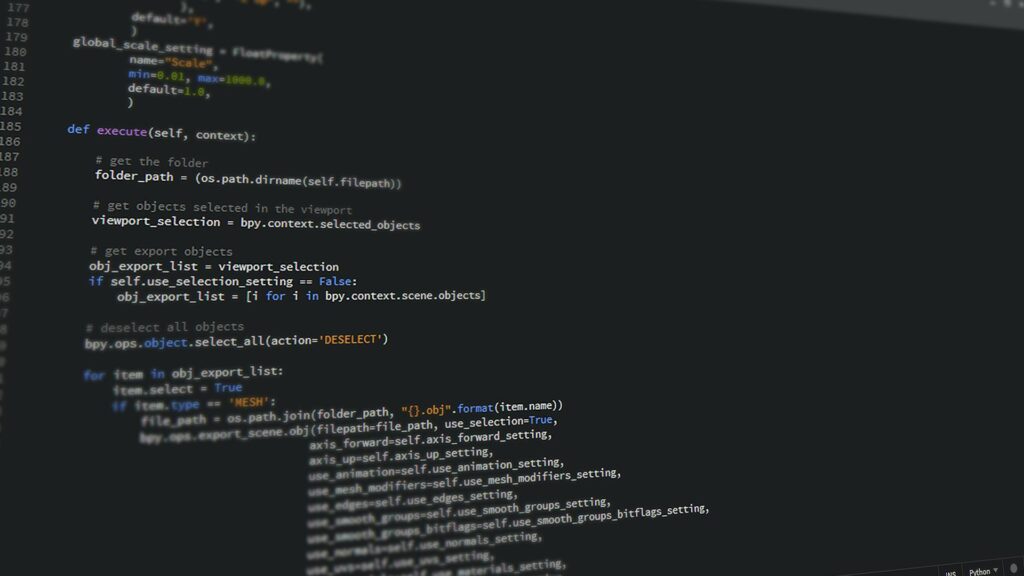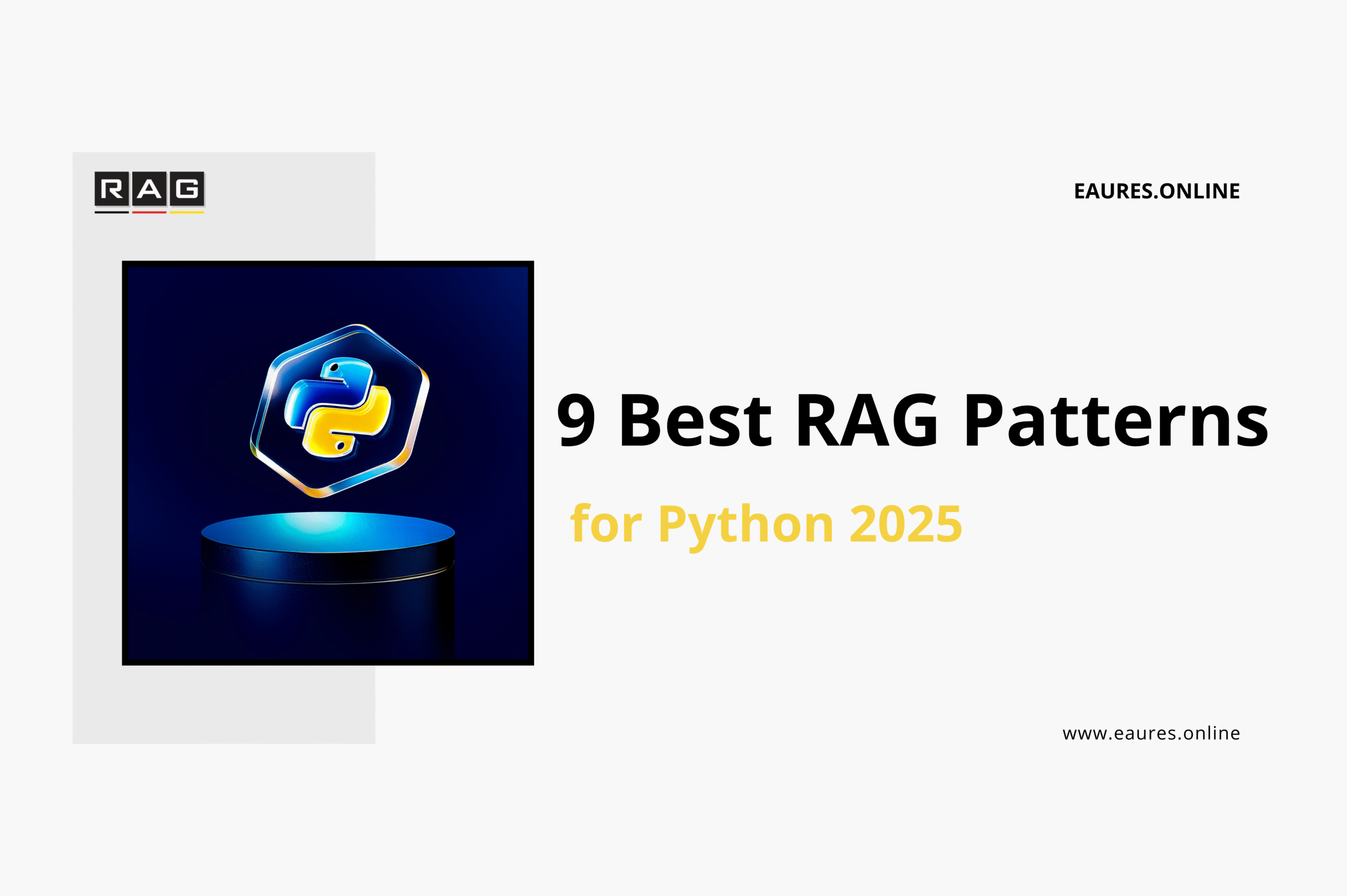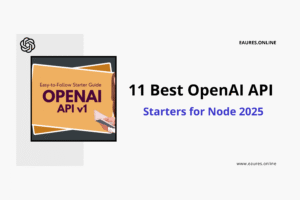Table of Contents
9 Best RAG Patterns for Python 2025
Why These Are the Best RAG Patterns for Python in 2025
Retrieval‑Augmented Generation (RAG) has matured from a novelty to a core design pattern for production AI systems. In 2025, the Best RAG Patterns for Python combine solid information retrieval, robust orchestration, and evaluation‑first engineering so teams can move from prototypes to reliable applications. This guide curates nine patterns that work in the real world, explains when to use them, and shows how to compose them into maintainable services.
Python remains the most pragmatic choice for RAG because its ecosystem pairs high‑quality IR/ANN libraries with modern serving frameworks. If your goal is to ship value quickly, the Best RAG Patterns for Python focus on predictable retrieval, low operational risk, and easy measurement rather than one‑off demos. Throughout the guide, you’ll find in‑paragraph links to foundational resources and deeper reference material so you can implement each pattern immediately.
Many engineering teams discover that RAG succeeds or fails long before the LLM call. The Best RAG Patterns for Python prioritize data preparation, indexing, and query planning, then apply generation as a final step. When you adopt this mindset—retrieval first, generation second—you reduce hallucinations, improve latency, and make your system easier to evaluate.
How to Choose Among the Best RAG Patterns for Python
Selecting among the Best RAG Patterns for Python boils down to matching the shape of your data and your constraints to the pattern that best addresses them.
Retrieval Quality KPIs that Actually Move the Needle
- Coverage: the fraction of ground‑truth answers that appear in your retrieved set.
- Precision@k / MRR / nDCG: measure whether your top results are actually the right ones.
- Faithfulness: whether generated outputs stick to retrieved evidence.
- Latency budget: user‑perceived end‑to‑end time, not just LLM latency.
- Cost per correct answer: the most honest KPI for production.
You can formalize these metrics with evaluation harnesses; for instance, teams often use RAG‑focused evaluation with open‑source libraries or build custom tests that pair question sets with gold passages.
System Constraints
- Content dynamics: is your corpus static, updated daily, or streaming by the minute?
- Safety & governance: need PII filtering, redaction, or provenance tracking?
- Traffic pattern: do you serve spikes, sustained throughput, or batch jobs?
- Budget: do you require an open‑source‑only stack or managed vector service?
Data Shape & Domain
- Long PDFs or manuals: hierarchical or section‑aware retrieval helps.
- APIs, tables, and logs: structured‑first or SQL‑augmented RAG patterns shine.
- Multihop reasoning: query decomposition and re‑ranking become critical.

Pattern 1 — Hybrid Sparse + Dense Retrieval (BM25 + Embeddings)
The “hello world” of the Best RAG Patterns for Python is hybrid search: combine BM25 (sparse lexical) with dense vector search to balance exact keyword matching with semantic similarity. Hybrid often beats pure dense on out‑of‑domain queries and noisy text.
How it Works
A typical pipeline:
- Chunk documents to ~200–500 tokens with smart boundaries (headings, sentences).
- Index with BM25 (e.g., Elasticsearch or OpenSearch) and a vector store (FAISS, Qdrant, Milvus, Weaviate).
- Search both indexes and merge results via reciprocal rank fusion or learned weights.
- Rerank top candidates with a cross‑encoder (see Pattern 2).
- Ground the LLM on the final set.
Python Stack
- Vector libraries: FAISS for local ANN; Qdrant’s documentation and Milvus docs for server‑side vector databases; Weaviate developer portal for hybrid search.
- Sparse search: Elasticsearch/OpenSearch with BM25 and k‑NN (OpenSearch k‑NN plugin).
- Embeddings: sentence‑transformers or model‑provider embeddings (OpenAI embeddings guide).
Tuning Tips
- Use reciprocal rank fusion (RRF) to blend BM25 and dense results without complicated learning.
- Normalize chunk length, and preserve section titles as first tokens; these are strong signals.
- Keep k small (20–50) before re‑ranking to control latency.
- Cache embedding calls and search responses with Redis to stabilize tail latencies.
When to Use
- Mixed corpora with jargon and acronyms where semantics alone miss exact matches.
- Early deployments where you want quick wins and intuitive failure modes.
Pattern 2 — Cross‑Encoder Re‑ranking (Two‑Stage Retrieval)
Cross‑encoder re‑ranking is the reliability multiplier for the Best RAG Patterns for Python. Even great ANN recall benefits from a more precise model to order the top candidates by semantic relevance.
How it Works
- Retrieve 50–200 candidates using hybrid search.
- Score each candidate with a cross‑encoder that jointly encodes query and passage.
- Keep the top 5–10 results for grounding the LLM.
Python Stack
- Cross‑encoders: bge‑reranker and other CrossEncoder models.
- LangChain & Haystack: integrate two‑stage retrieval using LangChain’s retrievers or Haystack RAG tutorials.
Tuning Tips
- Limit input to passage + minimal metadata; long contexts slow scoring.
- Use batched inference on GPU for stable throughput.
- Log pairwise scores; they’re invaluable for error analysis.
When to Use
- Customer‑facing search, help‑center assistants, and compliance use cases where precision matters more than raw recall.
Pattern 3 — Hierarchical (Section‑Aware) Retrieval
Large manuals, RFCs, or textbooks benefit from hierarchical retrieval, which respects document structure and avoids context dilution. Among the Best RAG Patterns for Python, this pattern minimizes the “wrong paragraph from the right document” failure.
How it Works
- Build indexes at multiple granularities: section, subsection, paragraph.
- Retrieve at coarse level, then drill down to fine‑grained passages.
- Propagate headings, breadcrumbs, and page numbers into the prompt for transparency.
Python Stack
- LlamaIndex supports tree/document retrievers and section‑aware strategies (LlamaIndex docs).
- LangChain provides composable retrievers for hierarchical flows (LangChain retrievers).
- Store hierarchical metadata in vector DBs like Chroma’s documentation or Qdrant.
Tuning Tips
- Keep “heading + summary + paragraph” as the canonical unit for final grounding.
- Promote table of contents nodes for navigational queries.
- Evaluate with nDCG at each level to catch ranking drift across hierarchies.
When to Use
- Policy handbooks, engineering guides, medical formularies, and knowledge bases with strong outline structure.

Pattern 4 — Query Decomposition & Multi‑Hop RAG
Some questions require multiple facts stitched together. This pattern decomposes the user query into sub‑questions, retrieves for each, then synthesizes an answer. It’s central to the Best RAG Patterns for Python for analytics and research assistants.
How it Works
- Use a planner (LLM or rules) to split complex questions into atomic sub‑queries.
- Retrieve per sub‑query, optionally rerank (Pattern 2).
- Merge evidence with a reducer (map‑reduce or chain‑of‑density summarization).
- Keep citation mapping from each fragment to the final statement.
Python Stack
- LangChain (map‑reduce, refine), LlamaIndex (query engines), and DSPy for structured prompting and planning (DSPy project page).
- Pandas + DuckDB for lightweight aggregation when joining retrieved tables (DuckDB).
Tuning Tips
- Cap the number of hops to reduce error compounding.
- Use answer sketches (bullet points) during synthesis to maintain traceability.
- Penalize redundant chunks in the planner to avoid evidence loops.
When to Use
- Competitive and market research, due‑diligence summaries, and investigative Q&A.
Pattern 5 — Graph RAG (Knowledge Graph + Vector)
Graph‑augmented RAG fuses relationships with semantic similarity. You convert entities and relations into a small knowledge graph, then expand along relevant edges before doing vector search. It’s one of the Best RAG Patterns for Python when precision and provenance matter.
How it Works
- Extract entities/relations from text, build a graph (NetworkX, Neo4j).
- Expand the query along K‑hop neighborhoods to localize context.
- For each candidate node/edge, fetch top supporting passages with vector search.
- Ground the LLM with both graph triples and passages.
Python Stack
- NetworkX for lightweight graphs or Neo4j for production; pair with Pinecone’s RAG best practices.
- Integrate with Haystack or LangChain for retriever orchestration.
Tuning Tips
- Restrict expansions to typed relations (e.g., “is‑a”, “part‑of”) to avoid graph blow‑up.
- Weight evidence from explicit relations higher than free‑text similarity.
- Pre‑compute entity embeddings as centroids of mention passages.
When to Use
- Regulatory, scientific, or cybersecurity domains where explainability and traceable links are crucial.
Pattern 6 — Structured‑First RAG (SQL, CSV, and Semantic Layers)
Many “text” questions are really data questions. This pattern routes analytical queries to SQL or DataFrames first and uses RAG for narrative context and definitions. It’s a dependable member of the Best RAG Patterns for Python because it avoids hallucinated numbers.
How it Works
- Classify queries as analytical vs narrative.
- For analytical queries: run Text‑to‑SQL or pre‑built SQL templates over DuckDB/Postgres, then explain results with RAG.
- For narrative queries: use standard hybrid retrieval with light schema snippets.
Python Stack
- SQLModel or SQLAlchemy with FastAPI (SQLModel site).
- DuckDB for local analytics (DuckDB docs).
- Pandas for joins and light transformations.
If you want a practical end‑to‑end walkthrough of data‑aware assistants, you can explore how to Automate data analysis with Python + LLMs to validate CSVs, profile datasets, add RAG context, and generate structured insights.
Tuning Tips
- Maintain a semantic glossary: definitions, metrics, and formulae as first‑class retrieval items.
- Prefer few vetted templates over unconstrained Text‑to‑SQL for sensitive data.
- Cache result sets and SQL plans to keep costs predictable.
When to Use
- BI copilots, operations dashboards, finance and RevOps assistants.
Pattern 7 — Freshness‑Aware & Incremental Indexing
When data changes hourly or faster, the system must prefer fresh passages without losing older ground truth. This pattern is essential among the Best RAG Patterns for Python for news, support tickets, and product documentation.
How it Works
- Delta ingest new content into a hot index (recent) and keep a warm index (historical).
- Search hot first, then warm; merge with recency‑aware RRF.
- Use Kafka or similar to stream updates and re‑chunk incrementally (Kafka docs).
- Flag stale passages for re‑embedding when thresholds are crossed.
Python Stack
- Ingestion with Pydantic‑validated pipelines (Pydantic docs).
- Vector DBs that support time filters (Weaviate, Qdrant, Milvus).
- Sparse side via OpenSearch/Elasticsearch for robust date filtering.
Tuning Tips
- Store ingest timestamps and document versions as retriever filters.
- Re‑embed only changed sections, not entire documents.
- Monitor drift in recall after each batch ingest with a small canary set.
When to Use
- Knowledge bases, changelogs, release notes, and any domain where time matters.

Pattern 8 — Long‑Context & Caching‑Aware RAG
Modern models can consume very long contexts, but brute‑force stuffing is inefficient. This pattern uses strategic retrieval + caching to keep latency stable while benefiting from longer windows. It complements the Best RAG Patterns for Python by reducing repeated compute.
How it Works
- Retrieve minimal evidence slices and build a rolling cache keyed by conversation + user.
- Promote high‑value passages (FAQs, policy snippets) to a prefix cache.
- Keep session memory separate from knowledge retrieval, merging only when needed.
Python Stack
- FastAPI for serving with response caching (FastAPI docs).
- Redis or Valkey for TTL‑based memory.
- Client‑side adapters in LangChain or LlamaIndex to reuse prior context windows.
Tuning Tips
- Cap the token budget per request and enforce strict inclusion criteria for context.
- Introduce context fingerprints so identical prompts reuse cached LLM outputs.
- Track hit rates and median latency post‑cache to prove value.
When to Use
- Conversational agents, back‑office copilots, and any use case with repeated queries.
Pattern 9 — Evaluation‑First, Observability, and Guardrails
The Best RAG Patterns for Python succeed when you measure. This pattern bakes in testable behaviors from day one and adds observability to catch regressions before users do.
How it Works
- Define golden test sets (questions + authoritative passages).
- Evaluate retrieval metrics (recall, precision@k) and answer metrics (faithfulness, groundedness).
- Add tracing and telemetry to see bottlenecks and prompt drift.
Python Stack
- Ragas for RAG‑specific evaluation (Ragas on GitHub).
- TruLens or Arize Phoenix for observability (TruLens site, Arize Phoenix docs).
- OpenTelemetry for Python to instrument services end‑to‑end (OpenTelemetry Python).
Tuning Tips
- Treat prompt changes like code changes: version, diff, and test.
- Track evidence tokens vs answer tokens to control drift.
- Include safety filters (PII masking, policy checks) as pre‑ and post‑processors.
When to Use
- Any production system where you need regression detection, compliance, or SLAs.
Reference Architecture: Composing the Best RAG Patterns for Python
A pragmatic reference stack can host several of the Best RAG Patterns for Python without over‑engineering.
Ingestion & Indexing
- Chunking: sentence‑aware with metadata capture (title, section, URL, timestamp).
- Embeddings: batch jobs with backpressure and observability.
- Stores: vector DB + sparse index; enable filters for tenant, doctype, time.
If you want a deep dive into trade‑offs for chunking, indexing, retrieval, and evaluation, this practical guide on how to Build a RAG app fast with FastAPI, FAISS, and pragmatic defaults outlines a 2025‑ready architecture.
Retrieval & Orchestration
- Implement pattern routers: hybrid (Pattern 1), reranking (Pattern 2), hierarchical (Pattern 3), etc.
- Standardize on retriever interfaces (LangChain retrievers or your own).
- Add query intent detectors for analytics vs narrative (Pattern 6).
Generation Layer
- Maintain model abstractions so you can A/B test providers.
- Use guardrails: content filters, citation enforcement, and rate limits.
Serving & Deployment
- Package as a FastAPI microservice with Pydantic‑validated schemas, health checks, and feature flags. A step‑by‑step tutorial shows how to build a production‑ready FastAPI FAISS RAG API with ingestion, indexing, search, generation, testing, Docker, and deployment.
Observability & Evaluation
- Centralize logs and spans with OpenTelemetry; export to your APM.
- Add nightly evaluation jobs over curated question sets; block bad releases.
Implementation Playbook (Hands‑On Checklist)
Use this checklist to operationalize the Best RAG Patterns for Python:
Data & Indexing
- Define document taxonomy (doctype, sensitivity, owner, freshness).
- Decide chunking rules; respect headings and lists.
- Choose vector DB (local FAISS vs managed).
- Build BM25 sidecar via OpenSearch or Elasticsearch.
Retrieval
- Start hybrid (Pattern 1) and layer in reranking (Pattern 2).
- If docs are long, add hierarchical (Pattern 3).
- For complex questions, add decomposition (Pattern 4).
- If relationships matter, prototype Graph RAG (Pattern 5).
Generation & Caching
- Cap context size; add prefix and result caching (Pattern 8).
- Enforce citation provenance in prompts.
Freshness
- Create hot/warm index split and delta ingest (Pattern 7).
- Automate re‑embedding for updated sections only.
Evaluation & Observability
- Establish gold sets and CI checks (Pattern 9).
- Track cost per correct answer and latency trends.
Team Productivity
- Standardize notebooks for error analysis.
- Keep developers sharp by exploring tools that compare the best AI code assistants in 2025 to speed up iteration and reviews.

Pattern‑by‑Pattern Quick Reference
This quick reference helps teams map the Best RAG Patterns for Python to scenarios:
- Hybrid BM25 + Dense: best baseline; great for mixed corpora; add RRF blending.
- Cross‑Encoder Reranking: precision booster; necessary for production search.
- Hierarchical Retrieval: long manuals and structured docs; preserves context.
- Query Decomposition: multi‑hop reasoning; break down complex asks.
- Graph RAG: entities + relations; compliance and research domains.
- Structured‑First: numbers and KPIs; SQL first, text later.
- Freshness‑Aware: newsy data; hot/warm indexes and delta ingest.
- Long‑Context & Caching: conversational workloads; stable latency.
- Evaluation‑First: CI for prompts, telemetry, and safety.
FAQs on the Best RAG Patterns for Python
Do I need a vector database or is FAISS enough?
For single‑tenant or small corpora, FAISS on disk is fine; when you need multi‑tenant isolation, time‑based filters, or horizontal scale, a vector DB (Qdrant, Milvus, Weaviate) reduces operational burden. Many teams begin with FAISS and migrate later, which is consistent with the Best RAG Patterns for Python emphasis on incremental adoption.
Which embedding model should I start with?
Begin with a strong general‑purpose sentence embedding from sentence‑transformers or a model‑provider embedding tuned for retrieval. Benchmark on your data—embedding choice often matters less than chunking and reranking within the Best RAG Patterns for Python.
Is Graph RAG overkill?
It can be. If your domain has clear entities, compliance requirements, or research‑grade provenance, Graph RAG pays off. Otherwise, hybrid + reranking (Patterns 1–2) is faster to ship and aligns with the pragmatic spirit behind the Best RAG Patterns for Python.
How do I keep answers up to date?
Adopt Pattern 7’s hot/warm index approach and schedule delta ingests. Add recency signals to your ranker and monitor recall drift. This approach is standard within the Best RAG Patterns for Python when freshness is a requirement.
Can I evaluate without labels?
Yes. Use weak labels (e.g., heuristic “contained‑in‑context” checks), synthetic Q&A built from your docs, or judger LLMs for early signals. As usage grows, curate a small gold set and wire it into your CI.
Putting It All Together
If you need one path forward, start with Patterns 1 and 2 (hybrid + reranking), add Pattern 3 for long documents, and Pattern 6 if metrics matter. Integrate Pattern 7 for freshness and Pattern 8 for caching as traffic grows. Finally, lock in Pattern 9 for evaluation before you scale the team. This progression embodies the Best RAG Patterns for Python because it’s incremental, testable, and production‑friendly.
To make your service durable, serve it behind FastAPI, validate payloads with Pydantic, trace with OpenTelemetry, and containerize for consistent rollouts. A companion tutorial shows how to assemble a production‑ready RAG API with FastAPI and FAISS, and if your scope includes analytics copilots, you can extend RAG with SQL using the approaches demonstrated in the guide on Automating data analysis with Python + LLMs.
The Best RAG Patterns for Python are not a fixed checklist; they’re a toolkit. Choose the simplest pattern that satisfies your constraints, measure relentlessly, and evolve with your data. By doing so, you’ll ship assistants that are fast, faithful, and genuinely useful in 2025.
Suggested Further Reading & Core Docs (Inline)
- Explore hybrid retrieval setups with OpenSearch’s k‑NN documentation inside your elasticity planning.
- Review vector store features in Qdrant’s docs and Milvus guides when designing filters and scalers.
- Learn end‑to‑end RAG flows using LangChain retrievers and LlamaIndex documentation for hierarchical strategies.
- Consider observability using TruLens and Arize Phoenix so evaluation stays continuous.
- If you are building from scratch, you can Build a RAG app with pragmatic defaults to see architecture and testing in one place.




